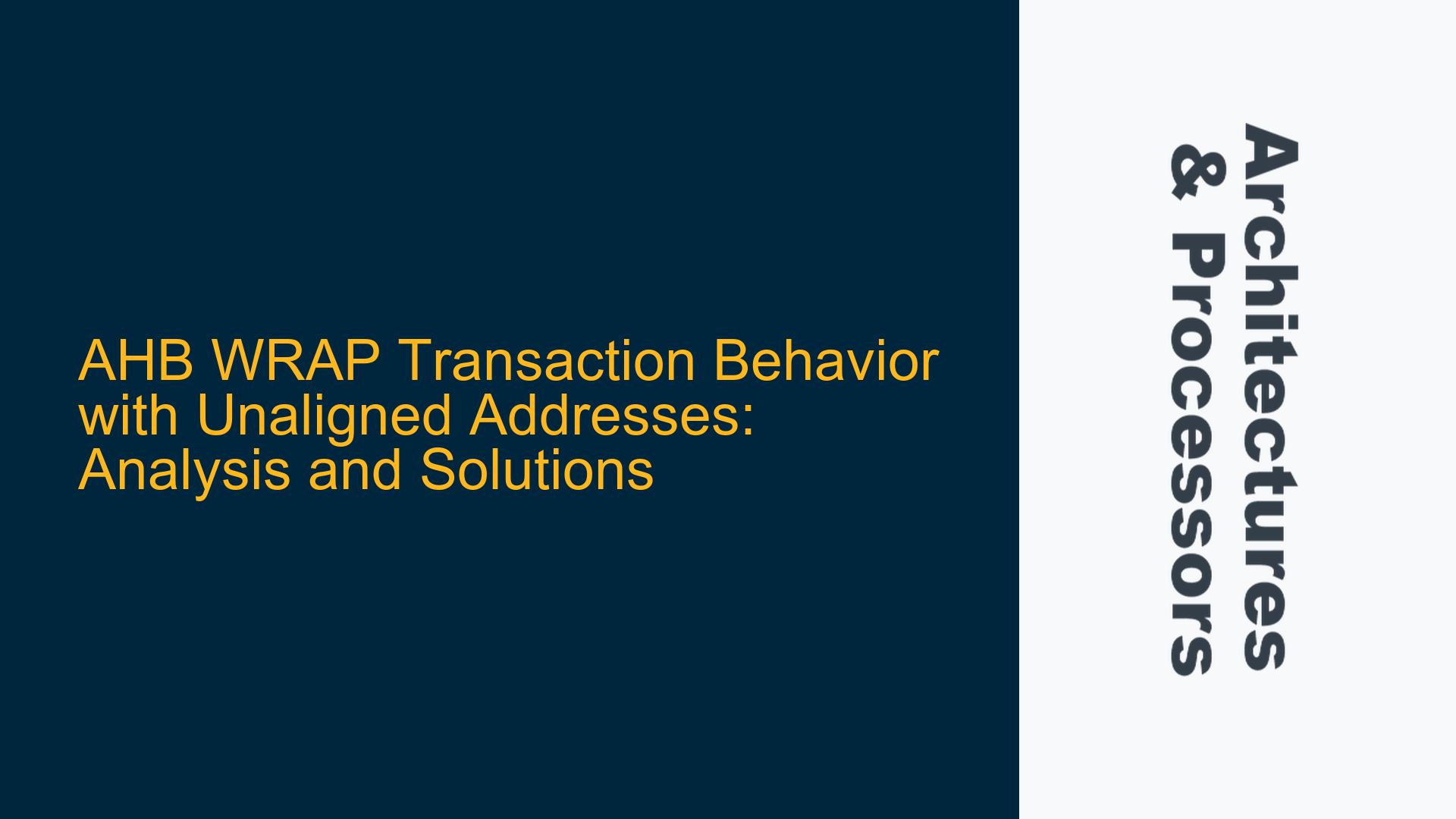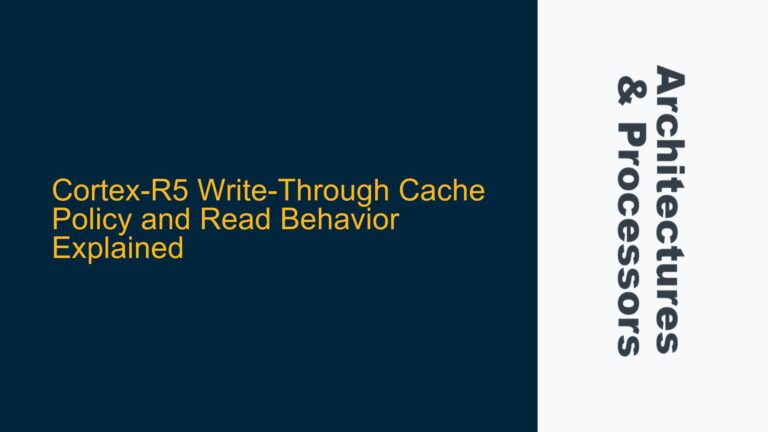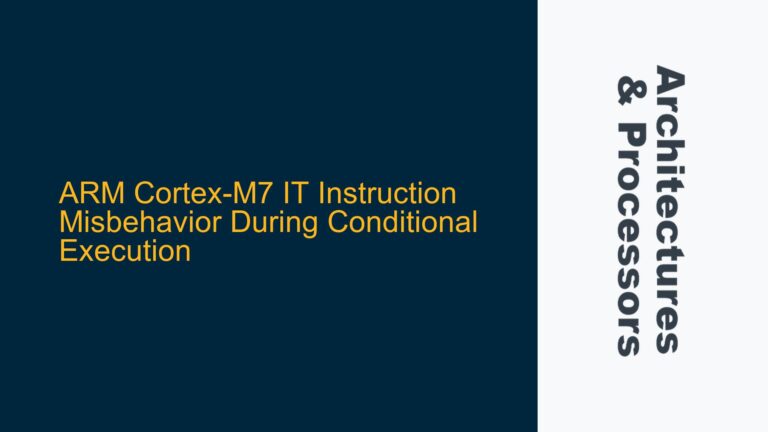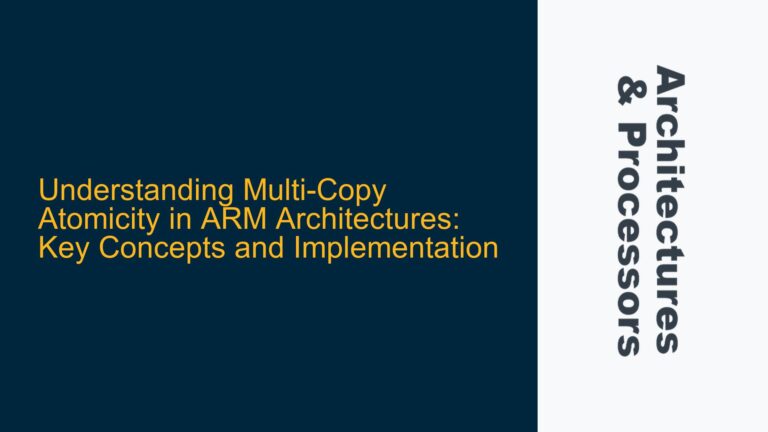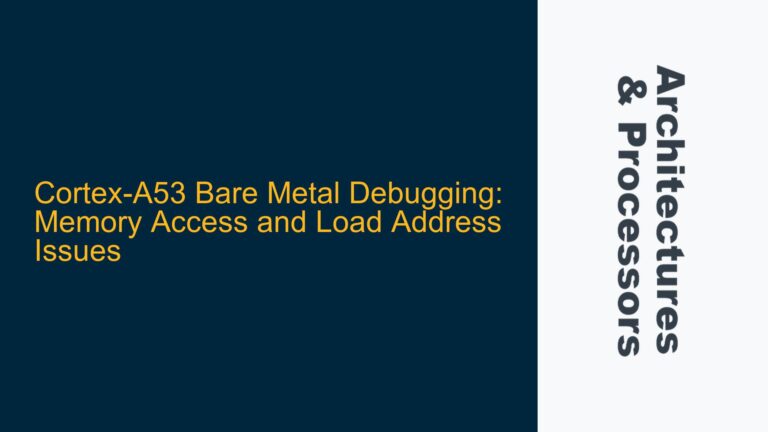AHB WRAP Transactions and Unaligned Address Handling
The Advanced High-performance Bus (AHB) protocol, part of the ARM AMBA specification, is widely used in SoC designs for its high-performance and efficient data transfer capabilities. One of the key features of AHB is its support for burst transactions, including WRAP bursts, which are particularly useful for cache line fills and other scenarios where data is accessed in a circular manner. However, the behavior of WRAP transactions when initiated with unaligned addresses can be a source of confusion and potential design issues. This post delves into the intricacies of AHB WRAP transactions, focusing on the implications of unaligned addresses and providing detailed guidance on how to handle such scenarios.
AHB WRAP Transactions: Addressing and Alignment Requirements
AHB WRAP transactions are designed to handle data transfers in a circular manner, where the address wraps around at a specified boundary. The alignment of the starting address is crucial for the correct operation of these transactions. According to the AHB specification, all transfer addresses (HADDR) must be aligned to the transfer width (HSIZE). For example, if the transfer width is 32 bits (HSIZE = WORD), the address must be aligned to a 4-byte boundary. This alignment requirement ensures that the data can be accessed efficiently and that the burst transactions can proceed without causing bus protocol violations.
However, the specification also mentions that unaligned addresses in WRAP transactions will be made aligned only when they cross a boundary. This statement can be ambiguous and requires a deeper understanding of the protocol to interpret correctly. Specifically, it implies that the alignment correction occurs dynamically during the transaction if the unaligned address causes the transfer to cross a boundary. This dynamic alignment correction can lead to unexpected behavior if not properly accounted for in the design and verification phases.
Case Analysis: Unaligned Addresses in WRAP Transactions
To better understand the implications of unaligned addresses in WRAP transactions, let’s analyze two specific cases:
Case 1: Starting Address = 0x35 with Address Boundary of 0x20
In this case, the starting address (0x35) is unaligned with respect to a 32-byte boundary (0x20). The AHB protocol requires that the address be aligned to the transfer width (HSIZE). If the transfer width is 32 bits (HSIZE = WORD), the address must be aligned to a 4-byte boundary. Since 0x35 is not aligned to a 4-byte boundary, the transaction will initially be unaligned. However, if the transaction crosses the 0x20 boundary, the protocol will dynamically align the address. This dynamic alignment can lead to unexpected behavior, especially if the design does not account for the possibility of unaligned addresses.
Case 2: Starting Address = 0x35 with Boundary of 0x40
In this case, the starting address (0x35) is unaligned with respect to a 64-byte boundary (0x40). Similar to Case 1, the address must be aligned to the transfer width (HSIZE). If the transfer width is 32 bits, the address must be aligned to a 4-byte boundary. Since 0x35 is not aligned to a 4-byte boundary, the transaction will initially be unaligned. However, if the transaction crosses the 0x40 boundary, the protocol will dynamically align the address. The key difference between this case and Case 1 is the boundary size, which affects when the alignment correction occurs.
Potential Causes of Misalignment in WRAP Transactions
The misalignment of addresses in WRAP transactions can be attributed to several factors, including incorrect address generation, improper configuration of the transfer width (HSIZE), and misunderstandings of the AHB protocol’s alignment requirements. Let’s explore these potential causes in detail.
Incorrect Address Generation
One of the primary causes of unaligned addresses in WRAP transactions is incorrect address generation. The address generation logic must ensure that the starting address is aligned to the transfer width (HSIZE). If the address generation logic does not account for the alignment requirements, it may produce unaligned addresses, leading to protocol violations and unexpected behavior.
Improper Configuration of Transfer Width (HSIZE)
The transfer width (HSIZE) plays a crucial role in determining the alignment requirements for AHB transactions. If the transfer width is not configured correctly, the address alignment requirements may not be met. For example, if the transfer width is set to 32 bits (HSIZE = WORD), the address must be aligned to a 4-byte boundary. If the transfer width is set to 64 bits (HSIZE = DWORD), the address must be aligned to an 8-byte boundary. Improper configuration of the transfer width can lead to unaligned addresses and protocol violations.
Misunderstandings of AHB Protocol Alignment Requirements
The AHB protocol’s alignment requirements can be complex, and misunderstandings of these requirements can lead to unaligned addresses in WRAP transactions. Specifically, the protocol’s statement that unaligned addresses will be made aligned only when they cross a boundary can be ambiguous. Designers may misinterpret this statement, leading to incorrect assumptions about the behavior of WRAP transactions with unaligned addresses.
Addressing Unaligned Addresses in WRAP Transactions: Solutions and Fixes
To address the challenges posed by unaligned addresses in WRAP transactions, designers must take a systematic approach to ensure that the address generation logic, transfer width configuration, and protocol requirements are correctly implemented. The following steps provide a detailed guide to troubleshooting and resolving issues related to unaligned addresses in WRAP transactions.
Step 1: Verify Address Generation Logic
The first step in addressing unaligned addresses in WRAP transactions is to verify the address generation logic. The address generation logic must ensure that the starting address is aligned to the transfer width (HSIZE). This can be achieved by implementing alignment checks in the address generation logic. For example, if the transfer width is 32 bits (HSIZE = WORD), the address generation logic should ensure that the starting address is aligned to a 4-byte boundary. This can be done by masking the lower two bits of the address.
Step 2: Validate Transfer Width Configuration
The next step is to validate the transfer width (HSIZE) configuration. The transfer width must be configured correctly to ensure that the address alignment requirements are met. This can be done by reviewing the configuration registers and ensuring that the transfer width is set according to the design requirements. For example, if the design requires 32-bit transfers, the transfer width should be set to WORD (HSIZE = 2’b10). If the design requires 64-bit transfers, the transfer width should be set to DWORD (HSIZE = 2’b11).
Step 3: Implement Dynamic Alignment Correction
To handle cases where the starting address is unaligned and the transaction crosses a boundary, the design must implement dynamic alignment correction. This involves detecting when the transaction crosses a boundary and adjusting the address accordingly. For example, if the starting address is 0x35 and the transaction crosses the 0x20 boundary, the address should be adjusted to 0x20. This can be achieved by implementing boundary detection logic and address adjustment logic in the AHB master.
Step 4: Verify Protocol Compliance
Finally, it is essential to verify that the design complies with the AHB protocol’s alignment requirements. This can be done by running simulation tests that cover various scenarios, including unaligned addresses and boundary crossings. The simulation tests should include checks to ensure that the address alignment requirements are met and that the dynamic alignment correction logic works as expected. Additionally, the simulation tests should include corner cases to ensure that the design handles all possible scenarios correctly.
Step 5: Debugging and Analysis
If issues persist after implementing the above steps, it is crucial to perform detailed debugging and analysis. This involves reviewing the simulation waveforms to identify any protocol violations or unexpected behavior. The debugging process should focus on identifying the root cause of the issue, whether it is related to address generation, transfer width configuration, or dynamic alignment correction. Once the root cause is identified, the necessary fixes can be implemented, and the design can be re-verified to ensure that the issue is resolved.
Conclusion
Unaligned addresses in AHB WRAP transactions can lead to protocol violations and unexpected behavior if not properly addressed. By understanding the AHB protocol’s alignment requirements and implementing the necessary checks and corrections, designers can ensure that their designs handle unaligned addresses correctly. The steps outlined in this post provide a comprehensive guide to troubleshooting and resolving issues related to unaligned addresses in WRAP transactions, ensuring that the design complies with the AHB protocol and operates as intended.
